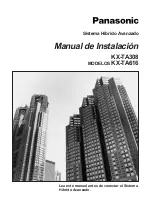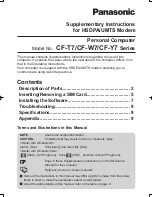
I56-6638-000
INSTALLATION AND MAINTENANCE INSTRUCTIONS
R
704 SW 10th Street
Blue Springs, MO 64015
Phone: 816.229.3405; Fax: 816.228.9277
www.fike.com
FIK-PC351
Multi-Criteria Photoelectric
and CO Sensor
SPECIFICATIONS
Operating Voltage Range:
15 to 32 VDC
Operating Current @ 24 VDC: 200 uA (one communication every 5 sec. with green LED blink on communication)
Maximum Alarm Current:
2 mA @ 24 VDC (one communication every 5 seconds with red LED solid on)
Maximum Current:
4.5 mA @ 24 VDC (one communication every 5 seconds with amber LED solid on)
Operating Humidity Range:
15% to 90% Relative Humidity, Non-condensing
Operating Temperature Range: 32°F to 122°F (0°C to 50°C)
Air Velocity:
0 to 4000 ft./min. (0 to 1219.2 m/min.)
Height:
2.7˝ (69 mm) installed in B200S series sounder base
Diameter:
6.875˝ (175 mm) installed in B200S series sounder bases
Weight:
3.4 oz. (95 g)
Isolator Load Rating:
0.0063*
*Please refer to your isolator base/module manual for isolator calculation instructions.
CO detector spacing, placement and special applications, refer to NFPA 72,
NFPA 720, and the System-Connected Carbon Monoxide Detectors Application
Guide also available from System Sensor.
WIRING GUIDE
All wiring must be installed in compliance with the National Electrical Code,
applicable local codes, and any special requirements of the Authority Having
Jurisdiction. Proper wire gauges should be used. The installation wires should
be color-coded to limit wiring mistakes and ease system troubleshooting.
Improper connections will prevent a system from responding properly in the
event of a fire.
Remove power from the communication line before installing sensors.
1. Wire the sensor base (supplied separately) per the base wiring diagram.
(See Figure 1.)
2. Set the desired address on the sensor address switches. (See Figure 2.)
3. Install the sensor into the sensor base. Push the sensor into the base while
turning it clockwise to secure it in place.
4. After all sensors have been installed, apply power to the control panel and
activate the communication line.
5. Test the sensor(s) as described in the TESTING section of this manual.
FIGURE 1. WIRING DIAGRAM
2
3
1
2
3
3
1
2
1
(–)
(+)
+
-
UL LISTED COM
PA
TIBLE
CONTR
OL
PA
NE
L
CLASS A OPTIONAL WIRING
REMOTE
ANNUNCIATOR
(–)
(+)
C0129-04
CAUTION
Do not loop wire under terminal 1 or 2. Break wire run to provide supervision
of connections.
FIGURE 2. ROTARY ADDRESS SWITCHES
TENS
ONES
9
10
11
12
13
14
15
8
7
6
5
4
3
2
1 0
9
8
7
6
5
4
3
2
1 0
C0162-00
UL 2075 listed for Carbon Monoxide
UL 268 listed for Open Air Protection
This sensor must be installed in compliance with the control panel system
installation manual. For local audible indication of a fire and/or carbon
monoxide alarm, it is recommended to install the multi-criteria photoelec-
tric and carbon monoxide (CO) sensor into a B200S series sounder base.
If a local audible device is not used, care should be taken to develop a
proper response plan. The installation must meet the requirements of
the Authority Having Jurisdiction (AHJ). Sensors offer maximum per-
formance when installed in compliance with the National Fire Protec-
tion Association (NFPA); see NFPA 72 and NFPA 720. For a complete list
of compatible bases, refer to the Base/Sensor Cross Reference Chart at
systemsensor.com.
GENERAL DESCRIPTION
Model FIK-PC351 is a plug-in type multi-criteria smoke sensor that offers a
photoelectric sensing chamber combined with a carbon monoxide (CO) sen-
sor as well as a carbon monoxide detector.
All sensors transmit an analog representation of smoke and/or carbon monox-
ide density over a communication line to a control panel. Rotary dial switches
are provided for setting the sensor’s address. (See Figure 2.)
Two LEDs on the sensor are controlled by the panel to indicate sensor status.
An output is provided for connection to an optional remote LED annunciator
(P/N RA100Z).
Fike panels offer different features sets across different models. As a result,
certain features of the photoelectric and CO sensors may be available on some
control panels, but not on others.
The multi-criteria photoelectric and CO sensor only supports Fike IDP mode
systems. The possible features available to FIK-PC351, if supported by the
control unit are:
1. The sensor’s LEDs can operate in three ways—on, off, and blinking—and
they can be set to red, green, or amber. This is controlled by the panel.
2. The remote output may be synchronized to the LED operation or con-
trolled independent of the LEDs.
3. Devices are point addressable up to 159 addresses.
Please refer to the operation manual for the UL listed control panel for specific
operation. The multi-criteria photoelectric and CO sensor requires compatible
addressable communications to function properly. Connect these sensors to
listed-compatible control panels only.
SPACING
Fike recommends spacing smoke detectors in compliance with NFPA 72. In
low air flow applications with smooth ceilings, space sensors 30 feet apart
(9.1 m). For specific information regarding sensor spacing, placement, and
special applications, refer to NFPA 72 and the System Smoke Detector Applica-
tion Guide, available from System Sensor. For specific information regarding
http://www.fike.com/06-912
For system/product documentation including
installation, operation, and maintenance,
scan QR code or enter URL provided.
1
I56-6638-000
1/15/2021






















